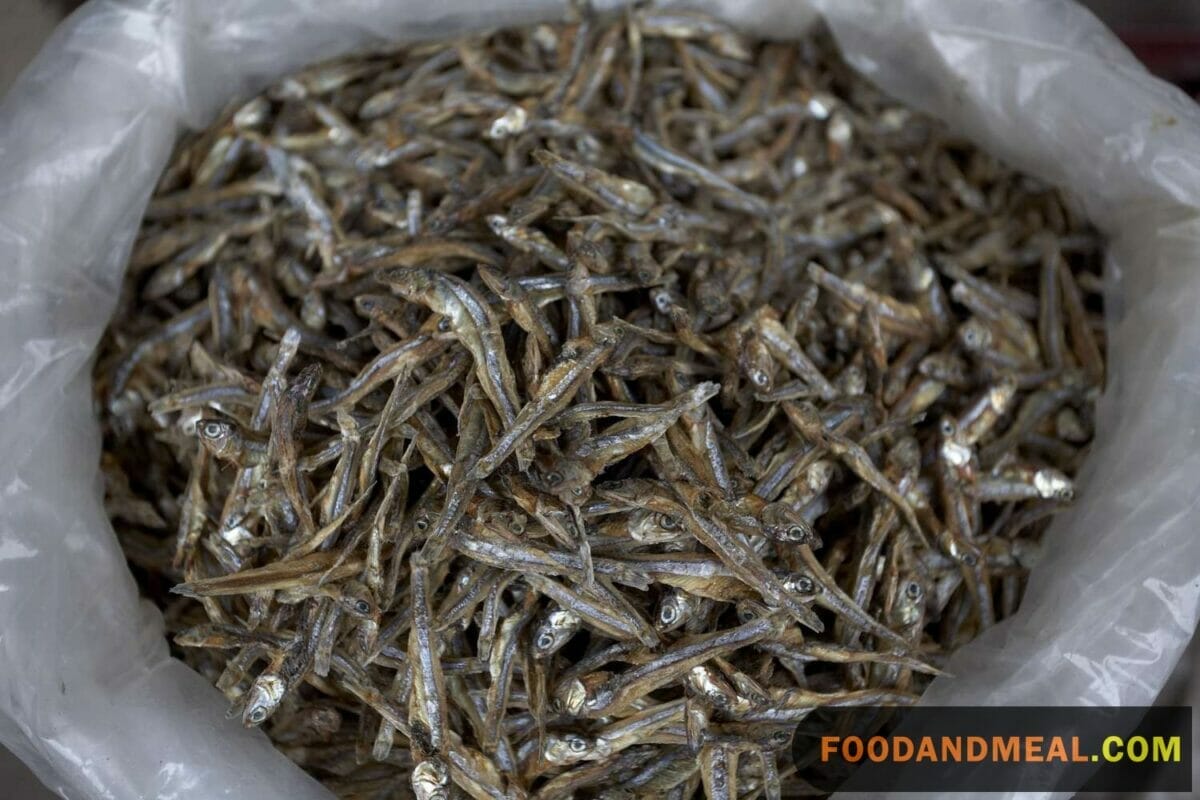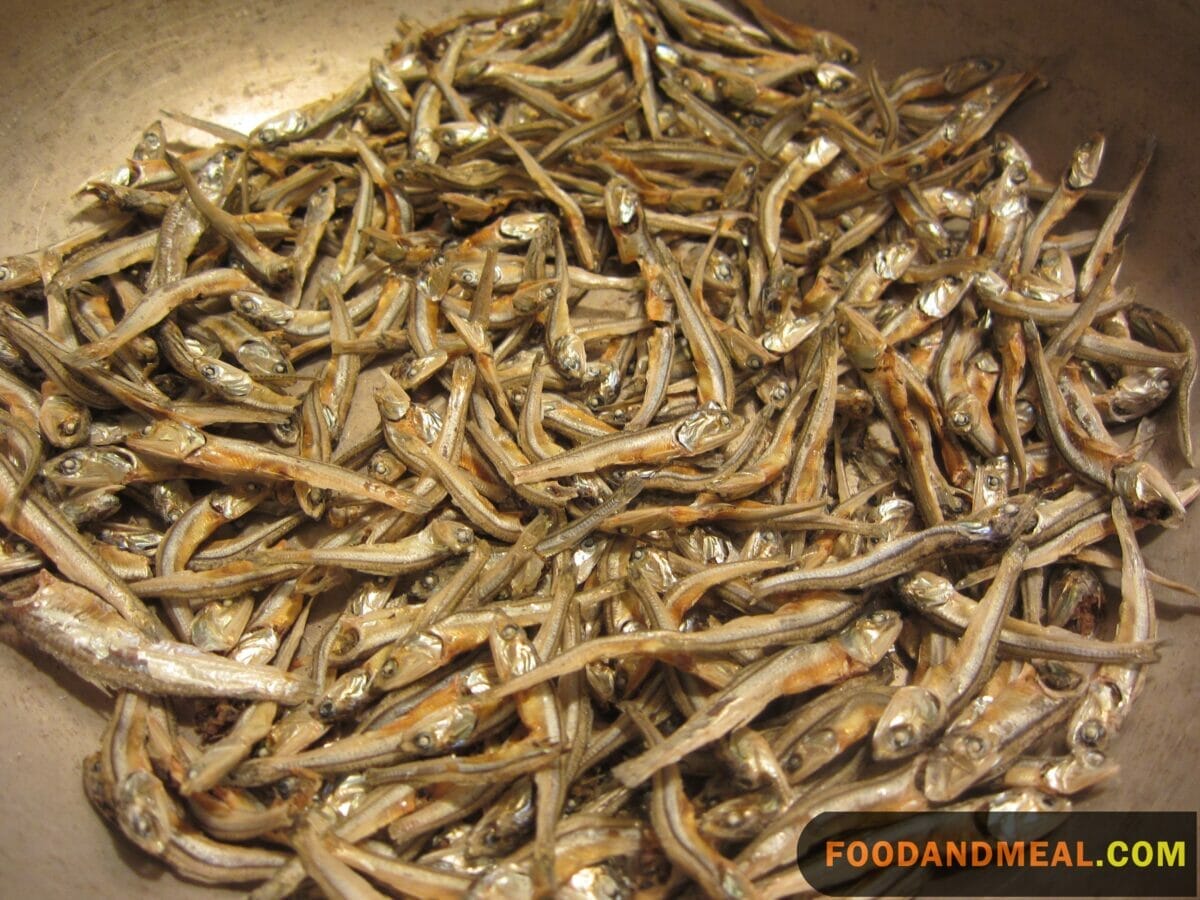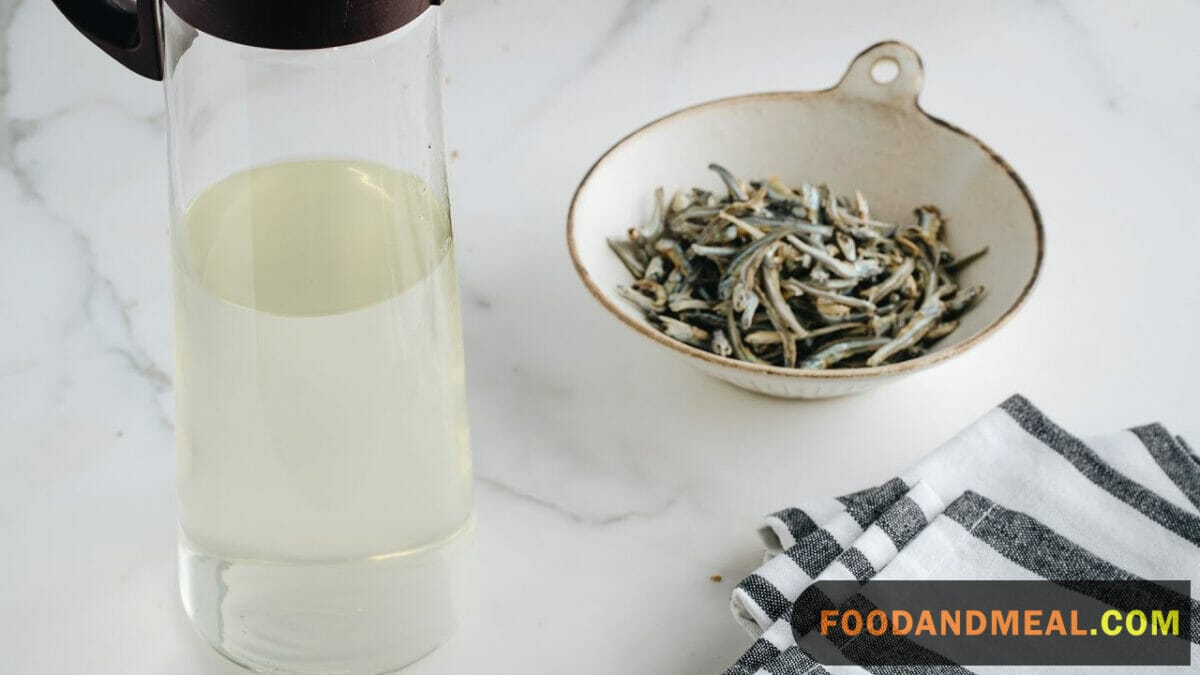As a home cook who loves experimenting with new ingredients, I was so excited to discover anchovy stock – a foundational Korean broth with an incredible umami depth. When I first tasted the rich, fishy flavor of anchovy broth at a local Korean restaurant, I knew I had to try making it myself at home.
I love that anchovy stock forms the cornerstone of so many Korean soups, stews, and banchan. It adds a savory meatiness without using any meat at all. The more I read about it, the more intrigued I became with incorporating this versatile ingredient into other dishes in my repertoire as well.
So in this blog post, I wanted to share my recipe for homemade anchovy broth and talk about the ways it can be used to add instant flavor to grains, veggies, marinades, and more. As a busy mom, I appreciate that anchovy stock comes together quickly and keeps for up to a week in the fridge. I hope by providing this easy method, I can encourage more home cooks to keep a batch of this umami-rich broth handy for everyday cooking!

Anchovy Stock Recipe

ANCHOVY STOCK
Equipment
Ingredients
- 1 cup dried anchovies
- 1 small sheet of dried kelp
- 10 cups water
Instructions
- Soak the dried anchovies and kelp in cold water for 2 hours to rehydrate.
- In a large stockpot, bring the 10 cups water to a boil over high heat. Stir in the anchovies and kelp and simmer briskly for 3 minutes. Turn off the heat.
- Discard the anchovies and kelp. You can do this with a soup strainer or pass the stock through a sieve to remove particles.
- Use the broth immediately, or for later use, store it in the refrigerator for up to 1 week or in the freezer for up to 2 months.
Video
Notes
- Quality Anchovies Matter: Opt for dried anchovies that are head-on, as they yield a richer and more intense flavor to your stock. Ready to unlock the essence of Korean cuisine? Let's delve into the recipe and embrace the umami goodness!
- Gentle Simmer for Richness: Simmer your anchovies and other ingredients gently. A slow and steady approach extracts the full depth of flavors. Eager to create a pot of culinary magic? Let's gather our ingredients and set the stage for umami perfection!
- Straining and Storing: Once your ANCHOVY STOCK is ready, strain it meticulously to achieve a clear and clean liquid. Store it in the refrigerator for up to a week or freeze for longer use. Excited to infuse your dishes with Korean umami? Let's explore the final steps of creating and preserving our ANCHOVY STOCK.
Nutrition
© Food And Meal
This website provides approximate nutrition information for convenience and as a courtesy only. Nutrition data is gathered primarily from the Spoonacular Database, whenever available, or otherwise other online calculators.
Cooking Tips

When I first tasted that rich, savory umami flavor, I knew it would become a staple in my kitchen for adding quick and easy flavor to all kinds of dishes.
After making anchovy broth a few times now, I’ve picked up some helpful tips for getting the most out of this ingredient. First, make sure to rinse the anchovies well under cold water before using to remove any grittiness. Though it seems counterintuitive to rinse away flavor, it really helps improve the clean taste.
When boiling the broth, keep the heat gentle so the anchovies don’t overcook and turn bitter. I like to simmer the broth for 15-20 minutes until fragrant before straining out the solids. Adding some garlic and onion to the broth as it simmers adds even more savory depth.
One thing I love about anchovy stock is its flexibility. Beyond Korean soups and stews, it makes a fantastic addition to pasta sauce, salad dressings, roasted veggies, and even marinades for meat. A little goes a long way in adding that savory kick.
When storing leftover anchovy broth, allow it to cool completely before transferring to an airtight container. Kept in the fridge, it will stay fresh for up to a week. You can also freeze broth in ice cube trays for easy use in recipes down the road.
Serving Suggestions

Veal Gremolata finds a perfect partner in a reduction of Anchovy Stock, creating a sauce that elevates the dish with umami richness. The Spinach Quiche, infused with Anchovy Stock, offers a dance of traditional comfort and exotic allure.
Soy Sauce Eggs, poached in Anchovy Stock, gain a unique character, and a Cherry Cobbler glazed with reduced Anchovy Stock achieves a perfect sweet-savory balance. Steak Teriyaki, marinated in Anchovy Stock and Teriyaki sauce, is a celebration of familiar and intriguing flavors.
Yakimiso Ramen finds depth with Anchovy Stock forming the soul of the broth. Shio Tantanmen, infused with Anchovy Stock, becomes a satisfying symphony of heat and umami. Sui-Gyoza Soup transforms into a heartwarming bowl with the umami goodness of Anchovy Stock.
Frequently Asked Questions of Anchovy Stock

- Is anchovy stock the same as dashi? No, anchovy stock and dashi are distinct. Anchovy stock is made from simmering dried anchovies, providing a rich umami flavor. Dashi, a Japanese stock, is typically made with kombu (seaweed) and bonito flakes, offering a different taste profile.
- What can I use instead of anchovy stock? If you need a substitute for anchovy stock, you can use fish stock, clam juice, or even vegetable broth. However, keep in mind that the flavor may differ slightly.
- Does anchovy stock go bad? Like any perishable food item, anchovy stock can go bad. Once cooled, store it in airtight containers, refrigerate for up to a week, or freeze for future use. When reheating, do so gently over low heat to preserve its quality.
- What do you do with anchovy stock? Anchovy stock is versatile. Use it as a base for soups, stews, or noodle dishes to impart a deep umami flavor. It can also enhance the taste of sauces or be used as a unique marinade for meats.
- Can I use powdered anchovy seasoning instead of dried anchovies? While dried anchovies are preferred for authenticity and flavor, you can use powdered anchovy seasoning as a substitute. However, the depth of flavor may vary.
- Can I customize the flavor of ANCHOVY STOCK? Absolutely! Experiment by adding ingredients like ginger, garlic, or mushrooms during the simmering process to tailor the flavor to your preference.
- Can I use ANCHOVY STOCK in non-Korean dishes? Certainly! ANCHOVY STOCK’s umami can enhance a variety of dishes beyond Korean cuisine. Use it in Asian-inspired broths, risottos, and more.
- Is ANCHOVY STOCK vegetarian-friendly? No, ANCHOVY STOCK is not vegetarian as it is made with anchovies. For a vegetarian alternative, consider using vegetable stock or dashi made from kombu (seaweed).
- How can I store leftover ANCHOVY STOCK? Once cooled, store the stock in airtight containers. Refrigerate for up to a week or freeze for future use. When reheating, gently warm the stock over low heat to preserve its quality.
Conclusion
In conclusion, anchovy stock is a versatile and flavorful ingredient that has become a staple in my kitchen. Its rich, savory umami adds instant depth and complexity to everything from soups and grains to salad dressings and veggie dishes. I hope this blog post has inspired you to give homemade anchovy broth a try and discover new ways to incorporate it into your own cooking, whether you’re following traditional Korean recipes or putting a new spin on familiar favorites.
As a chef at Food And Meal, my goal is always expanding the culinary horizons of home cooks everywhere. I’d love to hear your feedback and ideas for creative uses of anchovy stock too! Please share your anchovy creations by commenting below or tagging @foodandmeal on social media. Happy cooking!
Hi! I'm Nazia of ‘Nazia Cooks’, a self-taught baker and cook residing in Chennai. Rooted in the rich South Indian culinary landscape, my palate has expanded to embrace global flavors. I revel in crafting fusion dishes, melding traditions to birth unique tastes.



